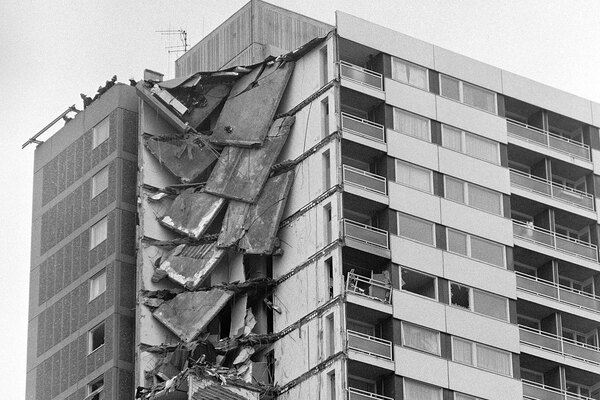Jury finds council missed chances to stop tragedy
The local authority landlord of a tower block in which six people died missed several opportunities to check the fire safety of their properties, the jurors in an inquest concluded.
Delivering their narrative verdict on the death of Catherine Hickman, 31, today the jury at the Lakanal House inquest said that Southwark Council, its contractors and subcontractors were guilty of ‘serious failings’ in relation to panels fitted to the outside of the block under the bedroom windows.
The panels fitted in a 2006/07 refurbishment were not ‘class 0’ - fire resisting - and if they had been they could have slowed the spread of fire from flat 65 to flat 79 above, they said.
The fire started in flat 65, and Ms Hickman died in flat 79.
‘Asbestos removal and replacement with composite panels had a significant impact on the fire resistance of the external wall of Lakanal House,’ the jury foreman said.
The jury also highlighted that the council’s building design services were advised to check the fire safety of flat 79 in October 2006 after the owner carried out some modifications, including removing an internal wall. The council never carried out this check.
‘This was a missed opportunity to consider the adequacy of fire protection [in the flat],’ the foreman of the jury read out.
In the verdicts of the other five who died - Helen Udoaka, 34, her 20-day-old baby Michelle, Dayana Francisquini, 26, and her two children, three-year-old Felipe and six-year-old Thais - in flat 81 - the jury said had Southwark Council carried out a fire risk assessment of the block compartmentation of the flats would have been checked.
A fire risk assessment might have ‘highlighted features of the building that required further investigation’, it concluded.
Fire spread into flat 81 because of a ‘serious failure of compartmentation’ - where a fire should be contained in a flat for one hour - the jury decided.
This was because of factors including the boxing in under the stair case not providing the required hour of fire resistance and lack of fire-stopping on internal pipework from previous renovations.
The installation of a new heating system in the 1980s would also have provided an ‘opportunity to ensure that the fire stopping around the pipes leading into flat 81, and segmentation within the suspended ceiling offered adequate protection from fire’.
The jury also pointed out that the 2006/07 decent homes refurbishment work provided an opportunity to ‘consider whether the level of fire protection at the building was adequate’.
They also said that fire brigade control should have ‘explored potential routes and means of escape’ with the residents in flat 81. The jury also said that the training of fire brigade control operators ‘failed to promote active listening or encourage operators to react to dynamic or unique situations’.
Jurors also said that firefighters made ‘insufficient efforts to prioritise and locate’ the flats where people were trapped and their confusion about the layout and numbering system of Lakanal House led to a delay in rescuing people on the 11th floor, where flat 79 and 81 were situated.
The jurors noted that the brigade control officers expected the Lakanal House victims to be rescued by firefighters.
The jurors decided that Catherine Hickman would have been able to escape from the fire on the east balcony until 4.40pm - about 20 minutes after the first 999 calls to the firefighters. The other five could have escaped along the same balcony by 5.15pm.
See our Safe as houses campaign page for full coverage of the inquest









